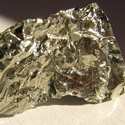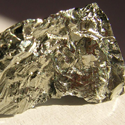Superconductivity in germanium
Ultraclean semiconductors are by definition unable to superconduct because at low temperatures there are too few carriers available to condense into the superconducting state. In principle, one could introduce enough charge carriers into a semiconductor, say by chemical doping. However, the necessary doping is so high that it often damages the semiconductor itself.
Boron-doped diamond and silicon have been found to superconduct at around and , respectively. In an article published in the Physical Review Letters, Thomas Hermannsdörfer and collaborators from the Dresden High Magnetic Field Laboratory and the Forschungzentrum Dresden-Rossendorf in Germany report superconductivity at about in gallium-doped germanium at ambient pressure.
Their first step is to use ion implantation on germanium to introduce the necessary high concentration of gallium dopants within a thin top layer. However, heavy ion implantation severely damages the local lattice structure of the germanium crystal. The challenge is to therefore reconstruct the crystal structure by annealing, without causing the dopants to diffuse away, float to the surface, or cluster. The researchers achieve that goal by using a specialized technique called flash-lamp annealing which employs short but intense light pulses.
As in the cases of diamond and silicon, further work will be required to determine the precise nature of superconductivity in this material. – Alex Klironomos





